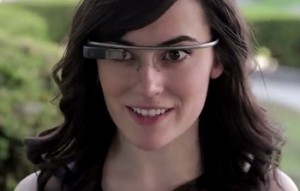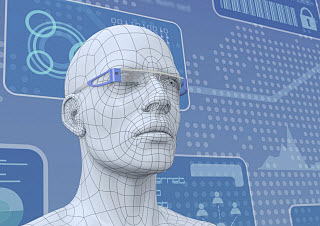A new Google patent reveals that AR technology is being developed, which could provide users with a map of their environment.
Late last week, a Google patent was published by the U.S. Patent and Trademark Office, which described a type of augmented reality technology that would enable users wearing an optical head-mounted display, like Google Glass, to view information about objects in their environment within their line of sight, reported the International Business Times.
The new technology would allow for the detection and recognition of target devices.
According to the patent application, the internet and computer software giant’s patent is called “Self-Describing Three-Dimensional (3D) Object Recognition and Control Descriptors for Augmented Reality Interfaces”. The abstract of the official patent application states that the technology would “provide for the detection and recognition of target devices, by a mobile computing device, within a pre-defined local environment.”
 In essence, what this means, according to the patent, is that the technology would provide users with details about the items that exist within their environment. For instance, this could include finding out the width and height of certain objects, such as tables or chairs, via augmented reality, as well as give users a map of the room in which they are present.
In essence, what this means, according to the patent, is that the technology would provide users with details about the items that exist within their environment. For instance, this could include finding out the width and height of certain objects, such as tables or chairs, via augmented reality, as well as give users a map of the room in which they are present.
This new patent may be good news for the future of Google Glass.
If this technology actually worked, in theory, it would be like having robot vision; something like the point of view that is commonly used in films to show what a robot sees as it analyzes its environment. More specifically, if a Google Glass device was equipped with this technology, it would have the potential to provide users with all the details they want to know about a certain object in a room, just by looking at it.
That being said, as exciting as this technology sounds, it is unlikely that it will give “Terminator”, “Robocop” or “Iron Man” vision to Google Glass users in the future. Right now, it’s still far too early to tell what will eventually be developed. After all, Google’s latest patent application only provides a glimpse of what the company is thinking. It doesn’t even guarantee that the product will ever reach commercialization.

 The patent application reveals relatively normal looking spectacles with a thick frame that features a display apparatus, which is tucked on the inside and is attached to the right arm of the glasses near the hinge. This would not only hide the projector, but make the
The patent application reveals relatively normal looking spectacles with a thick frame that features a display apparatus, which is tucked on the inside and is attached to the right arm of the glasses near the hinge. This would not only hide the projector, but make the 